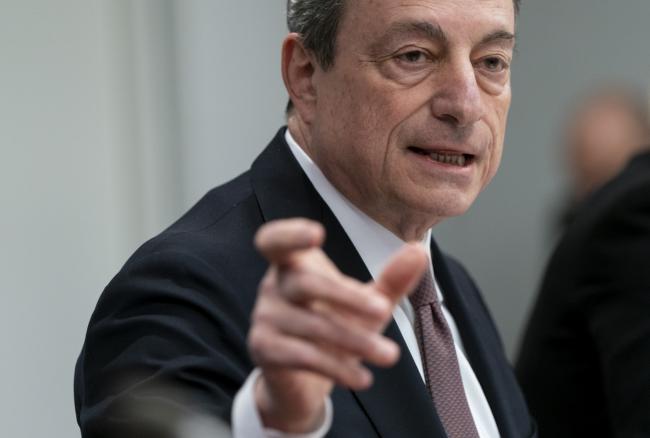(Bloomberg) -- The European Central Bank will flag next month that it’s ready to reduce interest rates and then deliver a cut in September as policy makers step up their efforts to revive the euro-zone economy, economists predict.
The push for additional support was set in motion by President Mario Draghi last week when he said more stimulus will be needed if the outlook doesn’t improve. He said prolonged uncertainty, largely driven by trade tensions, means the downside risks to growth and inflation have now materialized.
Most economists surveyed by Bloomberg said the Governing Council will change its policy language at its July 25 meeting to show that rates might fall -- the current wording says they’ll stay at “present levels at least through the first half of 2020.”
Respondents expect the deposit rate, already at a record low, to be reduced by 10 basis points to minus 0.5% in September. HSBC predicts a second cut of the same magnitude in December, and ABN Amro sees a second reduction at the start of next year. Money markets are pricing a 10-basis point cut in September.
Officials had previously hoped to start the slow return to higher rates sometime next year but now face a protracted period of even looser policy as they battle U.S.-driven protectionism that is battering the global economy. The Federal Reserve is also expected to cut this year, while nations including Australia, Russia, India and Chile have already started easing.
Most respondents in the survey said the ECB is likely to introduce measures such as exemptions to soften the impact of negative rates on banks. Lenders have complained that the costs of the charge on their overnight reserves can’t easily be passed on their depositors, squeezing profitability. Some officials are concerned that will eventually prompt banks to pare back lending.
Economists are largely split on whether the ECB will resume large-scale asset purchases any time soon, with a majority saying it won’t. The central bank only ended quantitative easing at the end of last year after 2.6 trillion euros ($3 trillion) of bond-buying since 2015.
Those analysts who do expect more QE estimate that buying will run for 15 months at a pace of 30 billion euros a month, starting late this year.
“The ECB needs to come big to shock markets,” said Piet Christiansen, senior ECB and euro-area analyst at Danske Bank, who expects a 20 basis point rate cut and the resumption of QE to be announced in September. “We have trust in the ECB delivering.”
Such stimulus would probably necessitate changes to the central bank’s self-imposed limits on purchases, according to the survey. It can currently hold no more than 33% of any government’s bonds -- or 25% for bonds with a so-called collective action clause -- and 50% of debt issued by supranational agencies.
Draghi signaled last week that those restrictions could be eased to reflect the circumstances facing the euro-zone economy. That raises the prospect of legal challenges though, as those limits aim to keep the ECB from breaking European Union law that bans money-printing to fund governments. Germany’s constitutional court will hold hearings on QE at the end of next month under an existing lawsuit.
